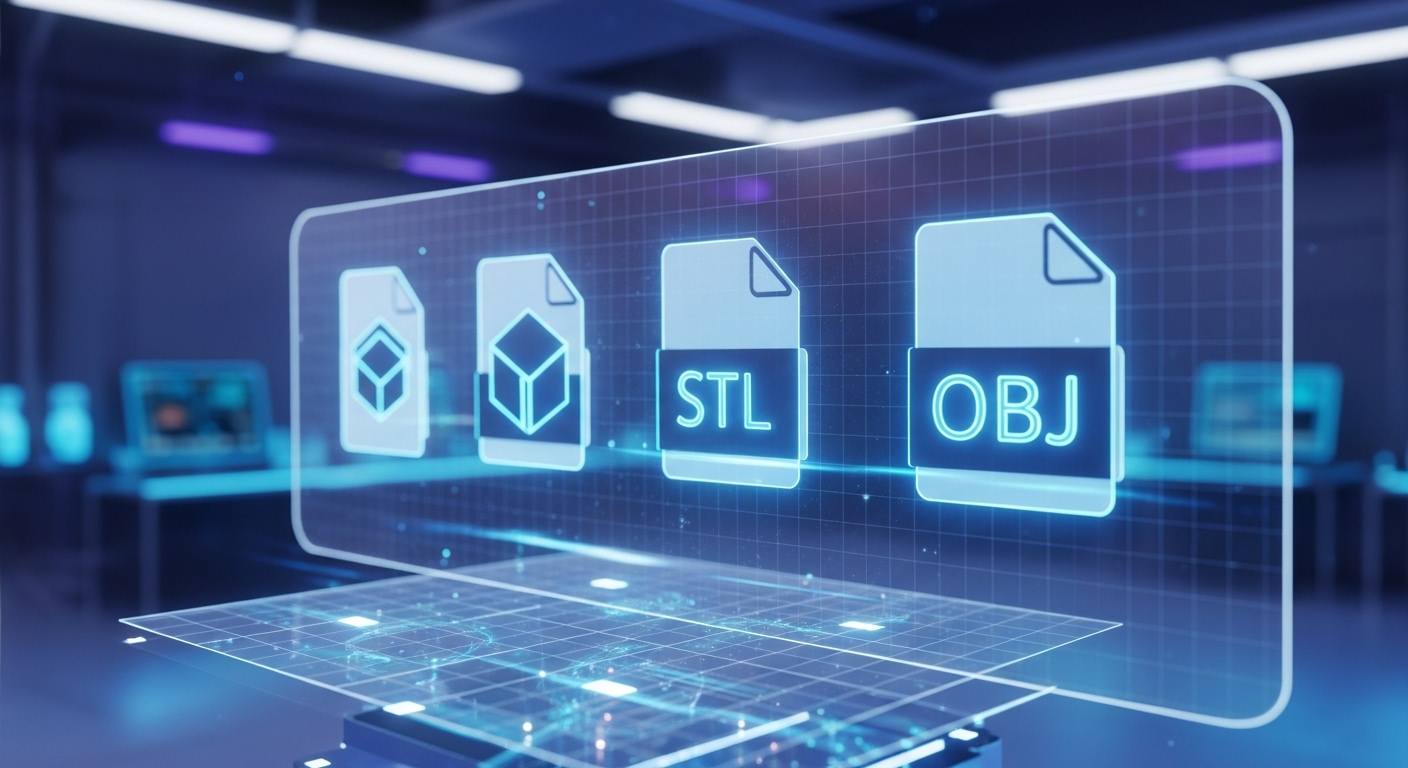Introduction
Before you can bring your idea to life with a 3D printer, you need a digital model—and more importantly, the right file format. Whether you’re using CAD software, downloading a template, or exporting from a 3D scanner, knowing which file types work best for printing is essential. This guide will help you understand the most commonly used formats and how to properly prepare them for a successful print.
Why File Type Matters
The file format you use affects:
- The level of detail preserved
- Compatibility with slicing software
- Ability to assign textures, colors, or metadata
- Print accuracy and stability
Choosing the wrong file—or failing to prepare it correctly—can lead to failed prints, wasted material, or time-consuming troubleshooting.
Top File Formats for 3D Printing
🔷 STL (.stl) – The Industry Standard
- Pros: Universal, lightweight, supported by all slicers
- Cons: Stores only geometry (no colors, units, or textures)
- Best For: Mechanical parts, prototypes, general use
🔶 OBJ (.obj) – Ideal for Complex Surfaces
- Pros: Supports textures, materials, and color data
- Cons: Slightly larger file sizes, may require .mtl side file
- Best For: Figurines, models with rich surface detail
🟩 3MF (.3mf) – The Modern Upgrade
- Pros: Retains units, metadata, colors, materials in one package
- Cons: Not supported by all older slicers
- Best For: Multi-material prints, high-fidelity designs
🧊 STEP / IGES (.step, .iges) – CAD Interchange Formats
- Pros: Excellent for engineering workflows, preserves parametric data
- Cons: Not suitable for slicing directly—must be converted to STL/3MF
- Best For: Collaborative engineering design before conversion
How to Export and Prepare Files for 3D Printing
✅ Step 1: Finalize Your Model
Check dimensions, wall thickness, and structural integrity in your modeling software.
✅ Step 2: Export in the Right Format
Choose STL for most prints, OBJ for textured models, or 3MF for complex multi-material jobs. Ensure your export settings use:
- Millimeters or inches (not arbitrary units)
- Sufficient resolution (e.g., fine or high-poly for curved surfaces)
✅ Step 3: Check for Errors
Use tools like:
- Netfabb, Meshmixer, or Microsoft 3D Builder to repair non-manifold geometry
- PrusaSlicer or Cura to visualize supports, orientation, and infill
✅ Step 4: Slice and Simulate
Import your model into slicing software and preview the print path layer by layer. This helps catch potential issues like floating parts or under-supported areas.
Common File Prep Mistakes to Avoid
- Forgetting to scale your model to the printer’s build volume
- Exporting files with units not recognized by your slicer
- Over-simplifying mesh and losing essential detail
- Ignoring overhangs or parts that require support structures


